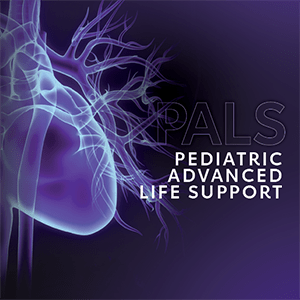PALS Provider Course
The AHA’s PALS Course has been updated to reflect new science in the 2020 AHA Guidelines Update for CPR and ECC. This classroom, Instructor-led course uses a series of videos and simulated pediatric emergencies to reinforce the important concepts of a systematic approach to pediatric assessment, basic life support, PALS treatment algorithms, effective resuscitation, and team dynamics. The goal of the PALS Course is to improve the quality of care provided to seriously ill or injured children, resulting in improved outcomes. This is the International English (IVE) version of the PALS Course. IVE training materials have been updated to include metric units of measure and other references that do not apply to students in the US and Canada.

Supported Languages
English, German, Italian, Japanese, Portuguese Brazil, International Spanish
Formats Available
Instructor-led, blended learning
- High-quality Child CPR AED and Infant CPR
- Recognition of patients who do and do not require immediate intervention
- Recognition of cardiopulmonary arrest early and application of CPR within 10 seconds
- Apply team dynamics
- Differentiation between respiratory distress and failure
- Early interventions for respiratory distress and failure
- Differentiation between compensated and decompensated (hypotensive) shock
- Early interventions for the treatment of shock
- Differentiation between unstable and stable patients with arrhythmias
- Clinical characteristics of instability in patients with arrhythmias
- Post–cardiac arrest management